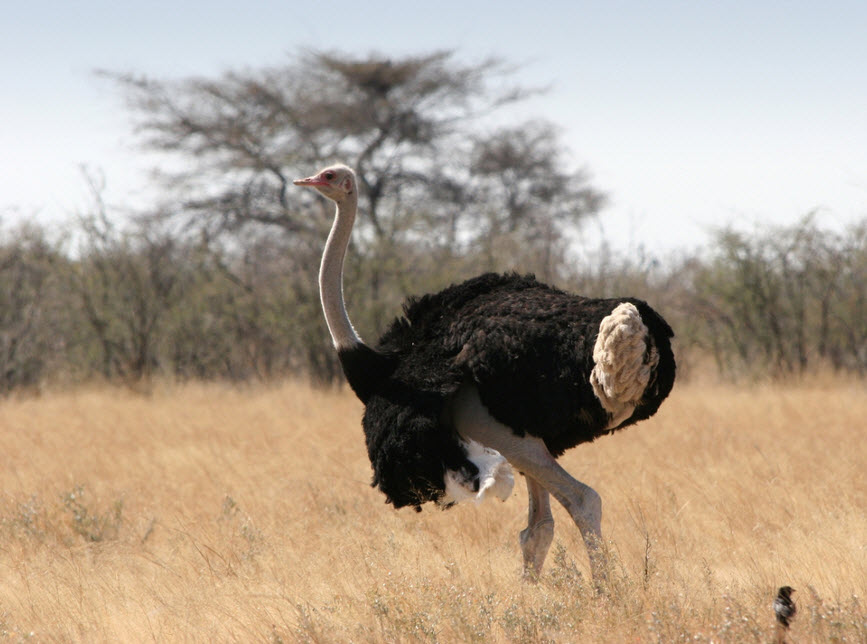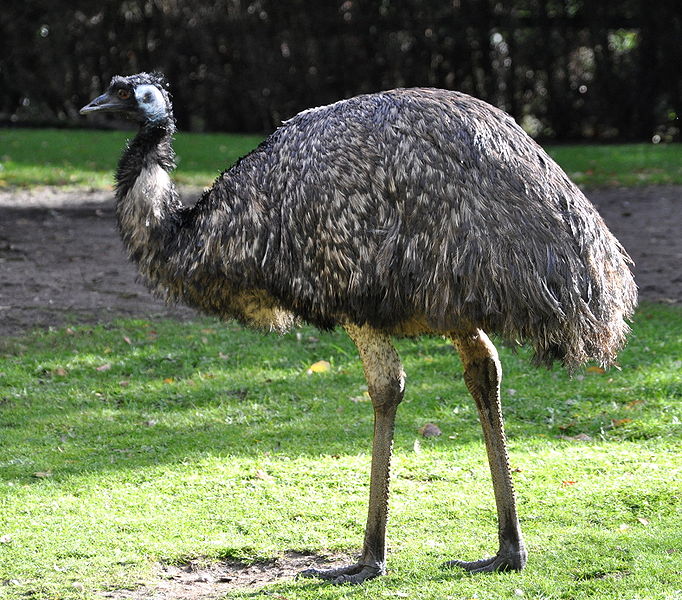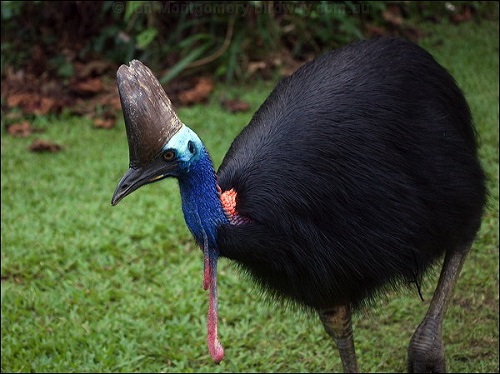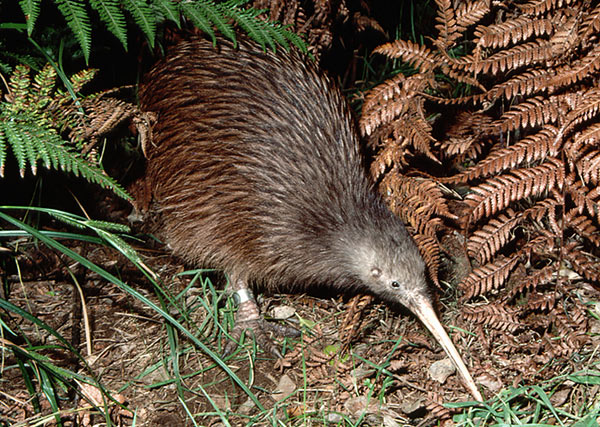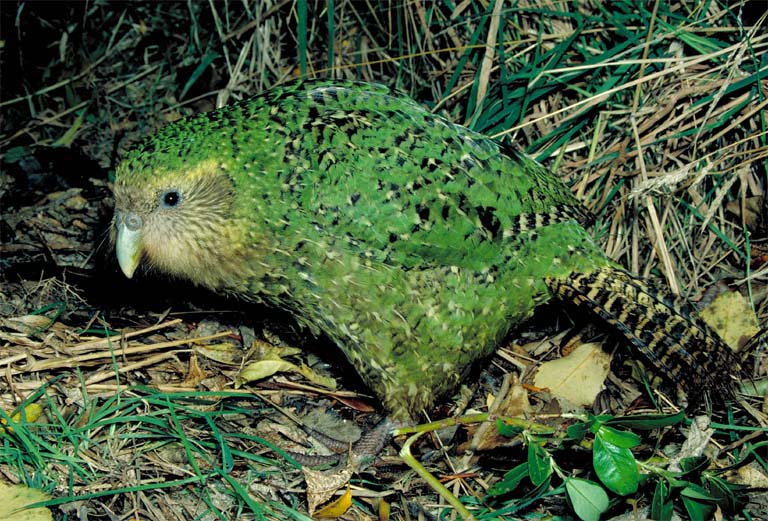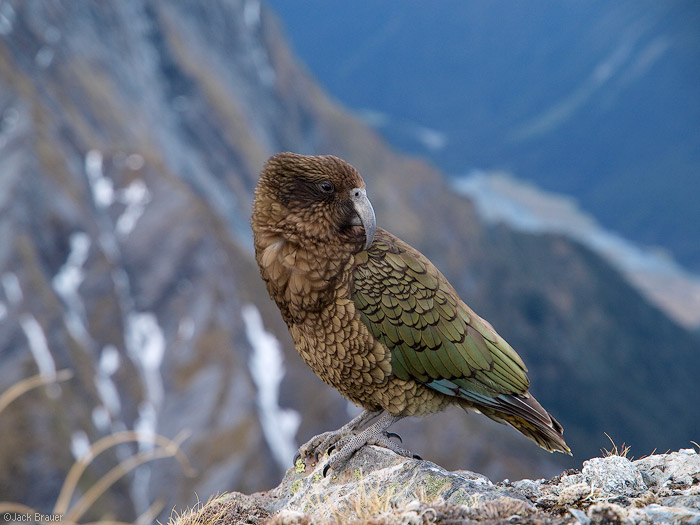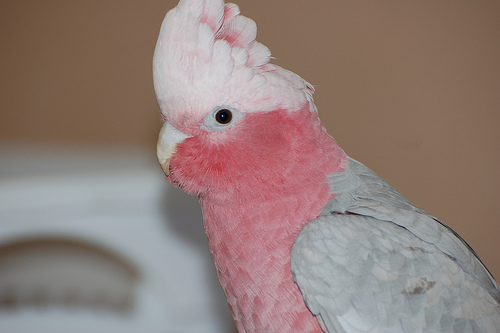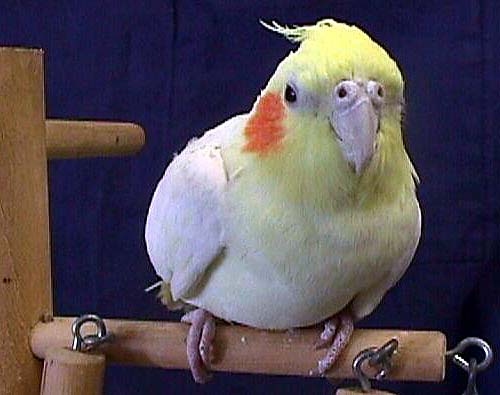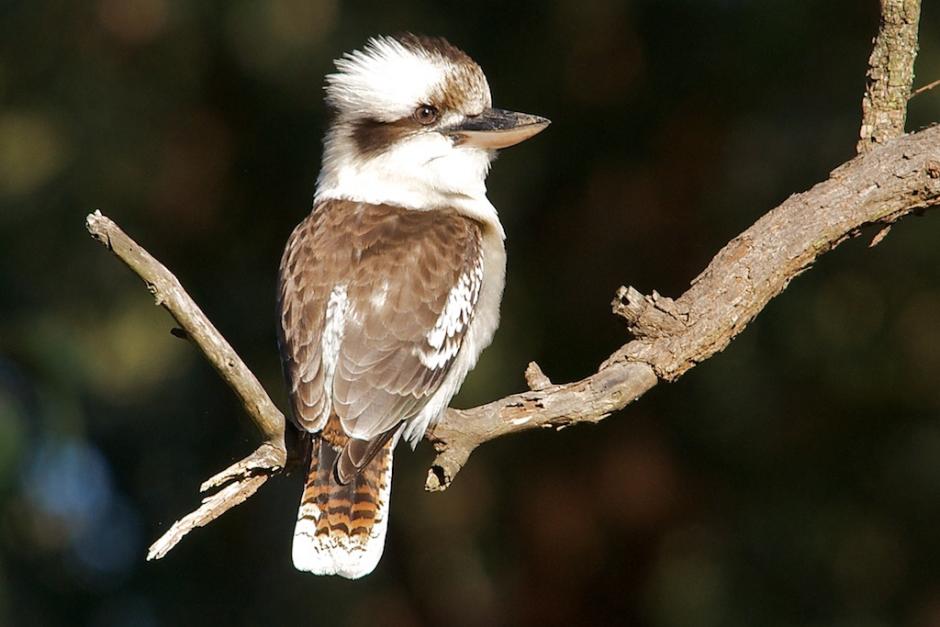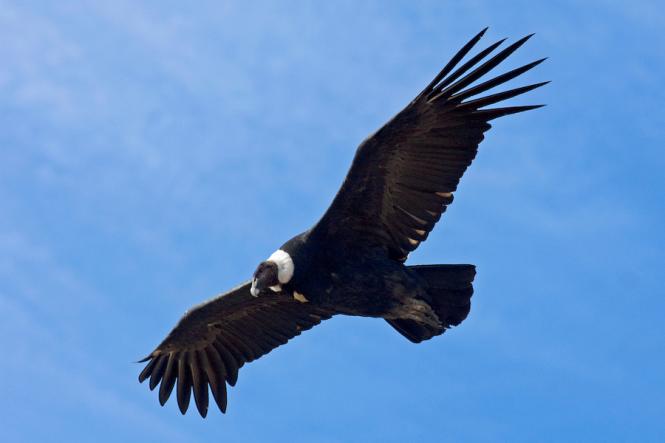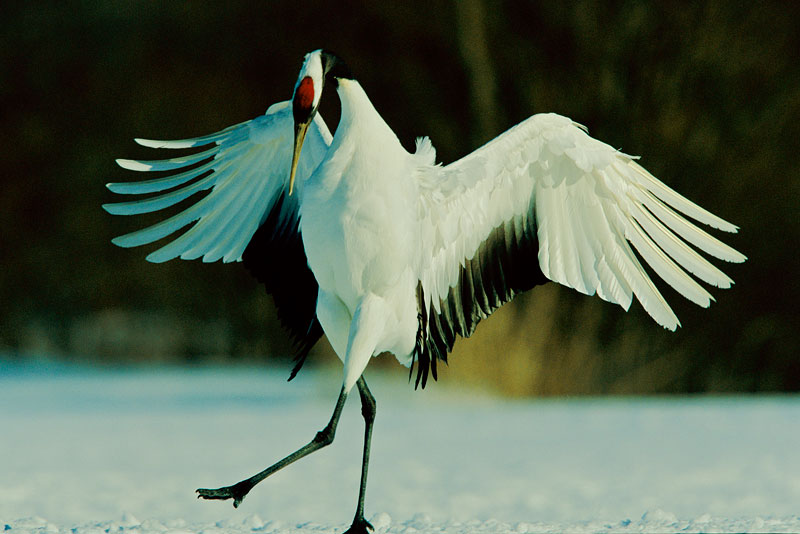Physical World/Birds
| Ostrich
It can run at speeds of about 40 mph, the top land speed of any bird. The ostrich is the largest living species of bird and lays the largest egg of any bird species. It has just two toes on each foot (most birds have four), with the nail on the larger, inner toe resembling a hoof | |
| Emu
The emu is the second largest bird in the world and the largest bird native to Australia Female emus court the males | |
| Southern cassowary
The most dangerous bird in the world. The blade-like claws are capable of killing humans and dogs if the bird is provoked | |
| Kiwi
Endemic to New Zealand. Kiwi is the only ratite that does not have a reduced number of toes. Kiwis lay the largest egg in relation to their body size of any species of bird in the world. Kiwi is the smallest living ratite | |
| Kakapo
The world’s only flightless parrot, from New Zealand. Also called the owl parrot, it is nocturnal and ground-dwelling The total known population is only 200 living individuals | |
| Kea
A parrot found in forested and alpine regions of the South Island of New Zealand. The Kea is one of the few recorded alpine parrots in the world. Destroys rubber parts of cars | |
| Galah
Eolophus roseicapilla
They are extremely noisy, often screeching, hanging upside down, dancing and playing Galah is also derogatory Australian slang, synonymous with fool or idiot | |
| Cockatiel
A member of the cockatoo family endemic to Australia The cockatiel's distinctive erectile crest expresses the animal's emotional state | |
| Laughing kookaburra
A carnivorous bird in the family Halcyonidae. Native to eastern Australia. Known for its laughing call. Previously known as the Laughing Jackass | |
| Andean condor
The largest largest flying land bird in South America Heaviest bird of prey. Andean condor has a maximum wingspan of 3.2 m | |
| Red-crowned crane
Famous for dances during the breeding season. Heaviest species of crane Adult red-crowned cranes are named for a patch of red bare skin on the crown, which becomes brighter in the mating season | |
| Resplendent quetzal
Plays an important role in Mesoamerican mythologies. The resplendent quetzal is Guatemala's national bird, and an image of it is on the flag and coat of arms of Guatemala. It is also the name of the local currency | |
| Lyrebird
They are most notable for their ability to mimic natural and artificial sounds from their environment. Lyrebirds are notable because of the striking beauty of the male bird's huge tail when it is fanned out in display; and also because of their courtship display | |
| Bowerbird
| |
| Butcherbird
| |
| Drongo
The word drongo is used as a mild form of insult meaning "idiot". This usage derives from an Australian racehorse of the same name rather than the bird | |
| Waxwing
| |
| Rhinoceros hornbill
Mouth of the hornbill nest is a small slit through which the male feeds the female | |
| Secretary bird
Looks like it has quill pens tucked behind the ear. It is a bird of prey endemic to Africa and kills snakes It appears on the coats of arms of Sudan and South Africa | |
| Bee hummingbird
With a mass around 1.6–2 g and a length of 5–6 cm, it is the smallest living bird Hummingbirds have the highest metabolism of any homeothermic animal | |
| Red-billed Quelea
| |
| Booby
Their name was possibly based on the Spanish slang term bobo, meaning "stupid", as these tame birds had a habit of landing on board sailing ships | |
| Great northern loon
Known as the great northern diver in Eurasia Well known in Canada, appearing on the one-dollar "loonie" coin and the previous series of $20 bills, and is the provincial bird of Ontario | |
| Pitohui
Endemic to New Guinea | |
| Common poorwill
Nocturnal bird in the nightjar family The only bird known to go into torpor for extended periods. Such an extended period of torpor is close to a state of hibernation, not known among other birds | |
| Baltimore oriole
It received its name from the resemblance of the male's colors to those on the coat-of-arms of Lord Baltimore. It is the inspiration for the Baltimore Orioles baseball team | |
| Northern cardinal
Also known as the redbird It is the mascot of the St. Louis Cardinals of Major League Baseball's National League and the Arizona Cardinals of the National Football League | |
| Spoonbill
| |
| Eurasian bittern
Also known as the great bittern A wading bird in the heron family. The mating call or contact call of the male is a deep, sighing fog-horn or bull-like "boom" | |
| Roadrunner
Also known as a chaparral bird. A fast-running (up to 20 mph) ground cuckoo that has a long tail and a crest Wile E. Coyote tries to catch a roadrunner in the Looney Tunes cartoons | |
| Cormorant
Humans have used cormorants' fishing skills in China and Japan, where they have been trained by fishermen | |
| Great egret
Egrets are not a biologically distinct group from the herons, and tend to be named differently because they are mainly white or have decorative plumes | |
| Goldcrest
Known as the "king of the birds" in European folklore. Member of the kinglet family The goldcrest is the smallest European bird. It has greenish upper-parts, whitish under-parts, and has two white wingbars | |
| Pied avocet
The pied avocet was extinct as a breeding species in Great Britain by 1840. Its successful recolonisation at Minsmere, Suffolk, in 1947 led to its adoption as the logo of the Royal Society for the Protection of Birds | |
| Northern lapwing
| |
| Great bustard
It was hunted out of existence in Britain by the 1840s. In 2004, a project overseeing the reintroduction to Salisbury Plain in using eggs taken from Russia was undertaken | |
| Red kite
| |
| Western capercaillie
The word capercaillie is a corruption of the Scottish Gaelic capull coille, meaning "horse of the woods" | |
| Rock ptarmigan
A medium-sized gamebird in the grouse family. It is seasonally camouflaged; its feathers moult from white in winter to brown in spring. It is the only British bird to change plumage between winter and summer | |
| Barn owl
Tyto alba The most widely distributed species of owl and the most widespread landbird species in the world, occurring in every continent except Antarctica. The face is characteristically heart-shaped and is white. This owl does not hoot, but utters an eerie shriek | |
| Tawny owl
Strix aluco Also known as the brown owl Mentioned in Love's Labour's Lost "Then nightly sings the staring owl, Tu-whit; Tu-who" | |
| Great grey owl
Strix nebulosa World's largest species of owl by length
| |
| Eurasian eagle-owl
Bubo bubo
| |
| Emperor penguin
Aptenodytes forsteri The tallest and heaviest of all living penguin species. Endemic to Antarctica
| |
| Macaroni penguin
Eudyptes chrysolophus One of six species of crested penguin, it is very closely related to the royal penguin
| |
| Adélie penguin
Pygoscelis adeliae They are named after the Antarctic territory of Adélie Land, in turn named for the wife of French explorer Jules Dumont d'Urville who discovered the penguins in 1840 | |
| Galapagos penguin
Spheniscus mendiculus Endemic to the Galapagos Islands. It is the only penguin that lives north of the equator in the wild |
